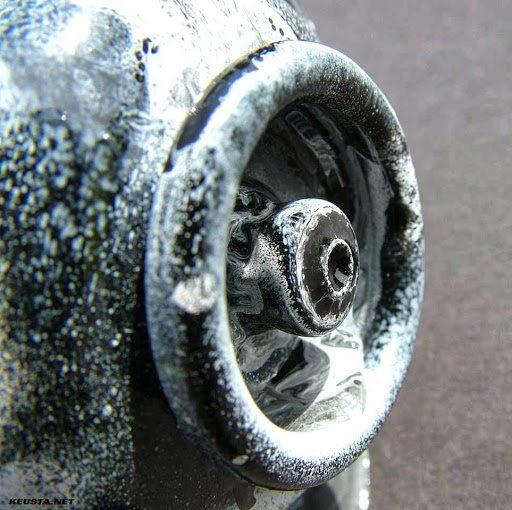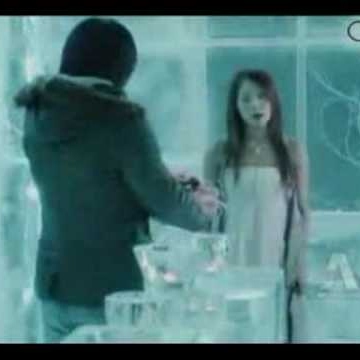Danh D Tran
age ~61
from San Francisco, CA
- Also known as:
-
- Do Tran Danh
- Tran Danh
- Daniel Tran
- Dan H Tran
- Danhdo Tran
- Dahn D Tran
- Danh Nguyen
Danh Tran Phones & Addresses
- San Francisco, CA
- San Leandro, CA
- Milpitas, CA
- Laurel, MD
- Silver Spring, MD
Resumes

Danh Tran San Jose, CA
view sourceWork:
LMP Italia, Inc
Sep 2009 to 2000
Office Staff
Sep 2009 to 2000
Office Staff
Education:
San Jose State University
San Jose, CA
2012 to 2014
Bachelor of Science in Accounting Evergreen Valley College
San Jose, CA
2009 to 2012
Associate of Art in Business Administration
San Jose, CA
2012 to 2014
Bachelor of Science in Accounting Evergreen Valley College
San Jose, CA
2009 to 2012
Associate of Art in Business Administration
Skills:
Accurate, detail oriented, conscientious and organized work style.<br/> Ability to work in a team and work independently.<br/> Very fast learner and eager to learn new things.<br/> Very strong math, problem solving, and troubleshooting skills.<br/> Proficient in Microsoft Office Applications, especially very strong in Excel and Access.<br/> Being trained in several accounting software: QuickBooks and Peachtree.

Danh Tran San Jose, CA
view sourceWork:
Devry University Engineering Lab
Fremont, CA
2010 to Jan 2010
Assistance students build prototypes and draws electrical schematics for senior project
Fremont, CA
2010 to Jan 2010
Assistance students build prototypes and draws electrical schematics for senior project
Education:
DeVry University
Jun 2010
Bachelors of Electrical Engineering Technology
Jun 2010
Bachelors of Electrical Engineering Technology
Name / Title
Company / Classification
Phones & Addresses
MARVELLOUS 2 FOR 1 PIZZA
Pizza
Pizza
243 Wharncliffe Road North, London, ON N6H 2B9
5198589222
5198589222
President
Infrared Fiber Systems Inc
Laboratory Analytical Instruments
Laboratory Analytical Instruments
2301 Broadbirch Dr # A, Silver Spring, MD 20904
Website: infraredfibersystems.com
Website: infraredfibersystems.com
President
Infrared Focal Systems, Inc.
Laboratory Analytical Instruments
Laboratory Analytical Instruments
2301 Broadbirch Dr Ste A, Silver Spring, MD 20904
President
Infrared Fiber Systems, Inc.
Information Technology and Services · Analytical Laboratory Instrument Mfg · Laboratory Analytical Instrume
Information Technology and Services · Analytical Laboratory Instrument Mfg · Laboratory Analytical Instrume
2301 Broadbirch Dr, Silver Spring, MD 20904
3016229546, 3016227135
3016229546, 3016227135
Owner
Trinas Nail Salons
Beauty Shop · Nail Salons
Beauty Shop · Nail Salons
4669 Clayton Rd, Concord, CA 94521
9256824454
9256824454
Principal
Tran Wireless Inc
Radiotelephone Communication
Radiotelephone Communication
4218 Mayport Ln, Fairfax, VA 22033
LA ME INC
MARVELLOUS 2 FOR 1 PIZZA
Pizza
Pizza
5198589222
Us Patents
-
Bootstrap Circuit To Cancel Input Bias Currents Of A Differential Amplifier Over Most Of Common-Mode Input Voltage Range
view source -
US Patent:6636111, Oct 21, 2003
-
Filed:Jul 26, 2002
-
Appl. No.:10/207446
-
Inventors:William H. Gross - Sunnyvale CA
Danh T. Tran - Fremont CA -
Assignee:Linear Technology Corporation - Milpitas CA
-
International Classification:H03L 500
-
US Classification:327589, 327307, 330261, 330269
-
Abstract:An electronic circuit to cancel the input bias currents of a differential amplifier over most of the common-mode input voltage range is provided. The circuit includes an arrangement of transistors, current mirror and current sources to track the input bias currents of the differential amplifier even when the common-mode voltage is within at least 0. 2 volts of the supply rail voltage level. The input bias cancellation currents are generated by tracking the input bias currents and injected into the differential amplifier inputs to cancel the input bias currents. The circuit includes a bootstrap loop to track the input bias currents when the common-mode voltage fluctuates.
-
Heavy-Metal Oxyfluoride Glasses For High Energy Laser Applications
view source -
US Patent:20040198581, Oct 7, 2004
-
Filed:Apr 1, 2004
-
Appl. No.:10/814193
-
Inventors:Danh Tran - Potomac MD, US
-
Assignee:Infrared Fiber Systems, Inc. - Silver Spring MD
-
International Classification:C03C003/23
C03C003/247 -
US Classification:501/043000, 501/044000
-
Abstract:Maximizing the glass forming ability of low metal-phosphate content fluoride-based glasses allows the fabrication of large-size “crystal-free” HEL windows. This involves the addition of glass stabilizer oxides such as SiO, TiO, Al2O. In situ quenching is used to fabricate large-scale HEL windows substantially free of crystals, bubbles and striation.
-
Method Of Making Optical Glass Windows Free Of Defects
view source -
US Patent:20090090135, Apr 9, 2009
-
Filed:Sep 29, 2008
-
Appl. No.:12/240525
-
Inventors:Danh C. Tran - Potomac MD, US
-
Assignee:INFRARED FOCAL SYSTEMS, INC. - Silver Spring MD
-
International Classification:C03B 19/02
-
US Classification:65 991
-
Abstract:High optical quality glass windows, particularly of low melting and low viscosity glasses and substantially free of defects, particularly adapted for high energy laser applications, are made by stirring the molten glass during cooling without the use of a mechanical stirrer within the glass, by rotating the mold or crucible in which the glass is cooling, using a motion which is not entirely a circular and rotary motion.
-
Fixation By Anion Exchange Of Toxic Materials In A Glass Matrix
view source -
US Patent:43338470, Jun 8, 1982
-
Filed:Aug 10, 1979
-
Appl. No.:6/065752
-
Inventors:Danh C. Tran - Rockville MD
Pedro B. Macedo - Bethesda MD
Joseph H. Simmons - Bethesda MD
Catherine J. Simmons - Bethesda MD
Nicholas Lagakos - Silver Spring MD -
International Classification:G21F 916
-
US Classification:252629
-
Abstract:This invention relates to the immobilization of toxic, e. g. , radioactive materials, internally in a silicate glass or silica gel matrix for extremely long periods of time. Toxic materials, such as radioactive wastes containing radioactive anions, and in some cases cations, which may be in the form of liquids, or solids dissolved or dispersed in liquids or gases, are internally incorporated into a glass matrix, having hydrous organofunctionalsiloxy groups, e. g. , hydrous aminoalkylsiloxy or carboxyorganosiloxy, bonded to silicon atoms of said glass and/or hydrous polyvalent metals bonded to silicon atoms of said glass through divalent oxygen linkages or otherwise immobilized therein, by a process which involves the ion exchange of said toxic, radioactive anions with hydroxyl groups attached to said organofunctionalsiloxy groups or with hydroxyl groups attached to the hydrous polyvalent metal. Thereafter, the resulting glass now characterized by a distribution of internally bonded or immobilized, toxic, radioactive anions can be packaged in suitable containers, and disposed of as by burial, and/or they can be sintered to collapse the pores thereof prior to disposal or for producing useful radiation sources. The porous glass or a porous silica gel having said silicon-bonded organofunctionalsiloxy groups and/or said hydrous polyvalent metal oxy groups, the pores of said glass or silica gel remaining open and uncollapsed, can be used advantageously as a backfill for an underground radioactive waste burial site and as overpack in the waste disposal container.
-
Fluoride Glass Fibers With Reduced Defects
view source -
US Patent:50551205, Oct 8, 1991
-
Filed:Mar 20, 1990
-
Appl. No.:7/498453
-
Inventors:Danh C. Tran - Bethesda MD
Reza Mossadegh - Silver Spring MD
Nicholas Garito - Fairfax VA
Mohamad Farid - Silver Spring MD -
Assignee:Infrared Fiber Systems, Inc. - Silver Spring MD
-
International Classification:C03B 37027
C03B 37012 -
US Classification:65 311
-
Abstract:Improved fluoride glass optical fibers are produced by a process introducing several improvements in the production of fluoride glass preforms and the drawing of fibers therefrom. Reduced bubble formation and crystallization are obtained by vertically spinning a fluoride glass melt within a glass cladding tube at a high rotational speed, or alternatively, pouring a flouride glass core melt into a cladding tube while slowly raising the mold from an inclined position to a vertical position, or alternatively, introducing a core tube inside a cladding tube. The production of fibers is enhanced if at least one production phase, i. e. , preform formation or fiber drawing, is conducted in an atmosphere containing reactive gases that scavenge molecules that could otherwise react with, hydrolyze and oxidize the fluoride glass. The disclosure also describes several devices uniquely useful in the process of the present invention. In another aspect of the present invention, fluoride glass fibers may be clad with a fluoropolymer which is coated with a polymerizable resin.
-
Biocompatible Optical Fiber Tip For In Vivo Laser Surgery
view source -
US Patent:58091998, Sep 15, 1998
-
Filed:Sep 20, 1996
-
Appl. No.:8/717099
-
Inventors:Danh Tran - Bethesda MD
-
Assignee:Infrared Fiber Systems, Inc. - Silver Spring MD
-
International Classification:G02B 600
-
US Classification:385141
-
Abstract:A biocompatible optical fiber tip derived from fluorophosphate glasses whose composition includes P--O compounds, AlF. sub. 3, alkali-earth fluorides, and/or alkali fluorides, and lanthanides fluoride is used with a medical laser to transmit power for surgical applications.
-
Immobilization Of Radwastes In Glass Containers And Products Formed Thereby
view source -
US Patent:43127746, Jan 26, 1982
-
Filed:Apr 30, 1979
-
Appl. No.:6/034567
-
Inventors:Pedro B. Macedo - Bethesda MD
Catherine J. Simmons - Bethesda MD
Danh C. Tran - Rockville MD
Nicholas Lagakos - Silver Spring MD
Joseph Simmons - Bethesda MD -
International Classification:G21F 916
-
US Classification:252629
-
Abstract:This invention relates to the immobilization of toxic materials, e. g. , radioactive materials, in glass for extremely long periods of time. Toxic materials, such as radioactive wastes, which may be in the form of liquids, or solids dissolved or dispersed in liquids or gases, are deposited in a glass container which is heated to evaporate off non-radioactive volatile materials, if present; to decompose salts, such as nitrates, if any, and to drive off volatile non-radioactive decomposition products, and then to collapse the walls of said container on said radwaste and seal the container and immobilize the contained radwaste, and then burying the resulting product underground or at sea. In another embodiment, the glass container also contains glass particles, e. g. , spheres or granules, on which the radwaste solids are deposited.
-
In-Situ Quenched Fluoride Glasses
view source -
US Patent:50455079, Sep 3, 1991
-
Filed:Jan 22, 1990
-
Appl. No.:7/468300
-
Inventors:Danh Tran - Bethesda MD
-
Assignee:Infrared Fiber Systems, Inc. - Silver Spring MD
-
International Classification:C03C 332
-
US Classification:501 40
-
Abstract:A process for producing high quality optical glass from fluoride glasses comprising preparing a melt of the glass and then cooling the melt in-situ inside the melt crucible. The in-situ quenching technique can be improved by narrowing the temperature range between the liquidus temperature and the glass transition temperature of the glass. The stability of the fluoride glass can be increased and the liquidus temperature of the glass can be lowered by doping the glass with a chloride dopant. Thorium tetrafluoride can be added to the chloride-doped glass in order to increase the chemical stability of the glass.

Danh Tran
view source
Danh Tran
view source
Duc Danh Tran
view source
Danh Tran
view source
Danh Tran
view source
Danh Tran
view source
Danh du Tran
view source
Danh Nguyen Tran
view sourceFlickr
Googleplus

Danh Tran
Work:
Hanoi,Vietnam - Executive Chef
Education:
Thot Not,Can Tho

Danh Tran
Work:
Tram y te trung hung - Y si da khoa

Danh Tran
Work:
Dong nai
Tagline:
Tinh tinh vui ve,thich duoc tu do khong go bo va co nhiu ban de vui choi

Danh Tran

Danh Tran

Danh Tran

Danh Tran

Danh Tran
Classmates

Danh Tran
view sourceSchools:
Ethan B. Allen Elementary School Fountain Valley CA 1999-2003
Community:
Amy Fortenberry

Danh Tran
view sourceSchools:
Petrus Ky High School Saigon Viet Nam 1965-1969

Danh Tran, Ft. Collins Hi...
view source
Ethan B. Allen Elementary...
view sourceGraduates:
Lisa Hughes (1980-1988),
Anthony Lowry (1999-2003),
Danh Tran (1999-2003),
Amie Shapiro (1993-1997),
Donna Bertram (1978-1984)
Anthony Lowry (1999-2003),
Danh Tran (1999-2003),
Amie Shapiro (1993-1997),
Donna Bertram (1978-1984)

Westminster High School, ...
view sourceGraduates:
Steve Goldstein (1969-1973),
danh tran (1988-1992),
ROBERT WATKINS (1957-1961),
Michele Solomon (1963-1967)
danh tran (1988-1992),
ROBERT WATKINS (1957-1961),
Michele Solomon (1963-1967)

Yadkinville High School, ...
view sourceGraduates:
Danh Tran (1999-2003),
James Wooten (1959-1963),
Eugene Swaim (1956-1960)
James Wooten (1959-1963),
Eugene Swaim (1956-1960)

South High School, Worces...
view sourceGraduates:
danh tran (1995-1999),
deborah cross (1971-1975),
Jason Harthan (1992-1996),
Wendi Grant (1977-1981),
John Bourassa (1963-1967)
deborah cross (1971-1975),
Jason Harthan (1992-1996),
Wendi Grant (1977-1981),
John Bourassa (1963-1967)

Treasure Island Elementar...
view sourceGraduates:
Danh Phat Tran (1987-1992),
Ashley Kearns (1976-1979),
Shannon Lawrence (1979-1981),
David Goad (1990-1993)
Ashley Kearns (1976-1979),
Shannon Lawrence (1979-1981),
David Goad (1990-1993)
Youtube
Get Report for Danh D Tran from San Francisco, CA, age ~61













